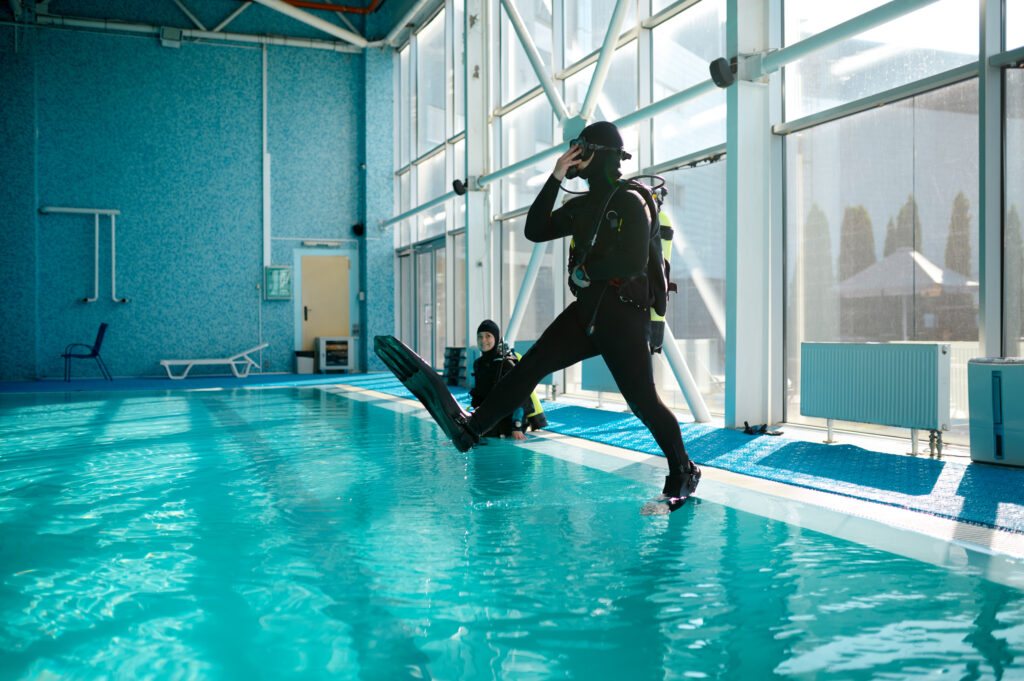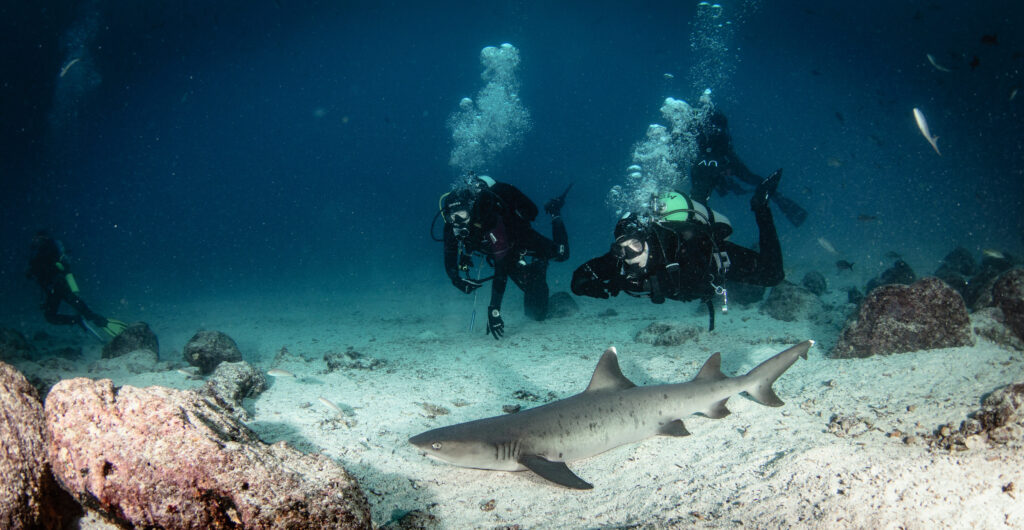What is a Lanyard?

A lanyard in the context of scuba diving is a crucial accessory designed to secure various pieces of diving equipment to a diver’s body or buoyancy compensator device (BCD). These cords, straps, or retractable reels ensure that essential tools such as cameras, flashlights, and dive computers remain attached to the diver, preventing accidental loss in the underwater environment. The importance of a lanyard cannot be overstated, as it contributes significantly to the safety and efficiency of diving operations, providing peace of mind and allowing divers to focus on their underwater activities.
What is a Pressure Gradient?

In scuba diving, understanding the concept of a pressure gradient is crucial for ensuring safety and effective dive planning. A pressure gradient refers to the change in pressure per unit distance within a fluid. In the context of diving, this typically means the variation in water pressure as a diver moves vertically through the water column. This phenomenon is essential because it affects everything from buoyancy control to the physiological impacts on the diver’s body.
What is Pounds Per Square Inch (PSI)?

Pounds per square inch (PSI) is a unit of pressure widely used in various fields, including scuba diving. Understanding PSI is crucial for divers because it directly relates to the equipment they use and their safety underwater. In scuba diving, PSI measures the pressure exerted by gas within a scuba tank, which is essential for breathing underwater. This unit helps divers know how much air they have left in their tanks, enabling them to plan their dives and avoid running out of air while submerged.
What is a Net Cutter?

A net cutter is a vital tool used by scuba divers to navigate underwater environments safely. This tool is specifically designed to cut through fishing nets, lines, and other entangling materials that may pose a threat to divers and marine life. The use of net cutters is crucial in emergency situations where quick action is required to free a trapped diver or animal. Net cutters are not only essential for personal safety but also play a significant role in environmental conservation by aiding in the removal of abandoned nets, which are harmful to underwater ecosystems.
What is a Lift Bag?

A lift bag is an essential piece of equipment in scuba diving, designed to assist divers in lifting heavy objects from the underwater environment to the surface. These devices use the principle of buoyancy to generate upward force, making it possible to transport items that would otherwise be too cumbersome or heavy to handle manually. Lift bags are commonly employed in various underwater tasks, from salvage operations and marine construction to scientific research. They play a crucial role in ensuring the safety and efficiency of these activities, providing divers with a reliable means to manage and move objects underwater.
What is No Mount Diving?

No mount diving is a specialized form of scuba diving that involves the diver carrying tanks and equipment separately from their body, usually holding or towing them instead of mounting them on a harness or backplate. This technique provides exceptional flexibility and maneuverability, particularly in environments that are too restrictive for traditional scuba gear setups. Originating from the need to navigate through tight underwater spaces, no mount diving has become a valuable technique in underwater exploration and technical diving circles, especially among cave divers and those exploring complex underwater structures.
What is Pressure?

Pressure is a fundamental concept in physics, defined as the force exerted per unit area. In the context of scuba diving, understanding pressure and its effects is crucial for safety and efficiency. Pressure plays a pivotal role in determining how divers experience the underwater environment, affecting everything from breathing to buoyancy. As divers descend into the water, the pressure increases, impacting both their equipment and bodies in significant ways. This article will discuss the principles of pressure, its effects on the human body, the health risks associated with changes in pressure, techniques for managing these changes, and the equipment designed to withstand them.
What is a Low Pressure Inflator?

The Low Pressure Inflator (LPI) is a crucial component in scuba diving equipment, connecting a diver’s buoyancy control device (BCD) to their air supply. It allows divers to control their buoyancy underwater, making it an essential tool for maintaining stability and comfort during dives. By pressing the inflator button, divers can add air to their BCD, making them more buoyant, while the deflator button allows them to release air, decreasing buoyancy. This control over buoyancy is vital for safe and enjoyable diving experiences.
What is a Quick Link?

A quick link, often used in scuba diving, is a small but crucial piece of hardware designed to connect various components of diving gear quickly and securely. Its design resembles a chain link but with a threaded closure, which allows for easy attachment and detachment. Quick links are indispensable in diving due to their strength, reliability, and ease of use, providing divers with a versatile tool for securing equipment such as hoses, accessories, and other essential items. Their simplicity and efficiency make them a preferred choice over other types of connectors.
What is Open Water Diving?

Open water diving is a fundamental form of recreational scuba diving, characterized by diving in natural bodies of water such as oceans, seas, and lakes. Unlike confined water diving, which takes place in controlled environments like swimming pools, open water diving offers divers the opportunity to experience the vastness and diversity of underwater ecosystems. This type of diving typically involves greater depths and more variable conditions, making it both a thrilling and challenging pursuit for enthusiasts of all levels. The concept of open water diving is integral to the sport, providing the foundation for various specialized diving activities and advanced certifications.
